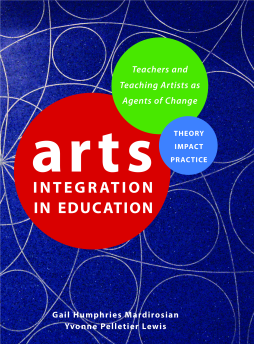
Additional Information
Book Details
Abstract
Arts Integration in Education is an insightful, even inspiring, investigation into the enormous possibilities for change that are offered by the application of arts integration in education. Presentingresearch from a range of settings, from pre-school to university, and featuring contributions from scholars and theorists, educational psychologists, teachers, and teaching artists, the book offers a comprehensive exploration and varying perspectives on theory, impact, and practices for arts-based training and arts-integrated instruction across the curriculum.
Table of Contents
| Section Title | Page | Action | Price |
|---|---|---|---|
| Cover | Cover | ||
| Quote | i | ||
| Half Title | iii | ||
| Title | v | ||
| Copyright | vi | ||
| Contents | vii | ||
| Foreword | xi | ||
| Acknowledgments | xvii | ||
| Introduction: Teachers First | 1 | ||
| Section I: Theory: Foundations of Arts Integration and Teacher Training | 11 | ||
| Reflection: Cognitive and Affective Frameworks for Arts-Based Teaching and Teacher Change | 13 | ||
| Chapter 1: Cognition, Knowledge Construction, and Motivation to Learn: Models and Theories | 15 | ||
| Chapter 2: Creativity, Collaboration, and Integration: The Ideas of Howard Gardner for Education in the Arts | 31 | ||
| Chapter 3: Emotional Aspects of the Theoretical Dimensions of Arts | 55 | ||
| Chapter 4: School Reform with a Brain: The Neuropsychological Foundations for Arts Integration | 69 | ||
| Section II: Impact: Training Teachers and Teaching Artists in Arts Integration | 89 | ||
| Reflection: Transform the Teacher, Transform Teaching | 91 | ||
| Chapter 5: The Imagination Quest (IQ ) Way of Teaching and Learning | 93 | ||
| Chapter 6: The Passion and Purpose of the Teaching Artist: A Connective and Transformative Power | 119 | ||
| Chapter 7: Prepare the Teacher, Prepare the Student: Arts-Based Pre-Service Teacher Training | 131 | ||
| Chapter 8: Drama and Action Techniques in University Teaching | 145 | ||
| Chapter 9: The Use of Drama in Teacher Training: A Czech Perspective | 163 | ||
| Chapter 10: Culture Clashes and Arts Integration at the University | 179 | ||
| Chapter 11: Training Teachers in the Classics: Shakespeare in Action in the Classroom | 195 | ||
| Chapter 12: Training Teachers in Science Through Theater: How Did They Do That? | 209 | ||
| Chapter 13: Embracing the Energy of the Early Years: Training to Teach Through Theater | 223 | ||
| Chapter 14: Transformative Education Processes: Difficult Dialogues and Global Citizenry | 239 | ||
| Section III: Practice: Arts Integration in the Classroom, the School, the Community | 261 | ||
| Reflection: Systemic Activation of Change: From Teacher to School to Community | 263 | ||
| Chapter 15: Arts Integration for School Change | 265 | ||
| Chapter 16: Reenergizing School and Community Through the Arts: The Little School that Could | 273 | ||
| Chapter 17: Engagement in Learning: Inclusive Arts Integration Interventions | 287 | ||
| Chapter 18: Engaging Students in Learning Through Theater Skills and Strategies | 309 | ||
| Chapter 19: Dancing with the Brain: Brain-Compatible Dance Education in University-Level Teaching and Community Outreach Programs | 319 | ||
| Chapter 20: A Story Impact on Pedagogy: Why New Orleans Matters | 335 | ||
| Chapter 21: Tell Me Your Story and I’ll Tell You Mine: Transformation Through Writing and Performance | 357 | ||
| Chapter 22: Personal Stories as Motivators: The Playback Theatre Experience | 381 | ||
| Chapter 23: Science Learning Through Arts-Based Instruction | 403 | ||
| Chapter 24: The Bilingual Classroom: Teaching Through Verbal and Physical Language | 413 | ||
| Chapter 25: Arts Education: Systemic Change and Sustainability | 433 | ||
| Conclusion: Looking Forward: Infinite Possibilities for Teaching and Learning | 463 | ||
| Editors | 467 | ||
| Contributors | 469 | ||
| Index | 479 | ||
| Back Cover | 489 |
